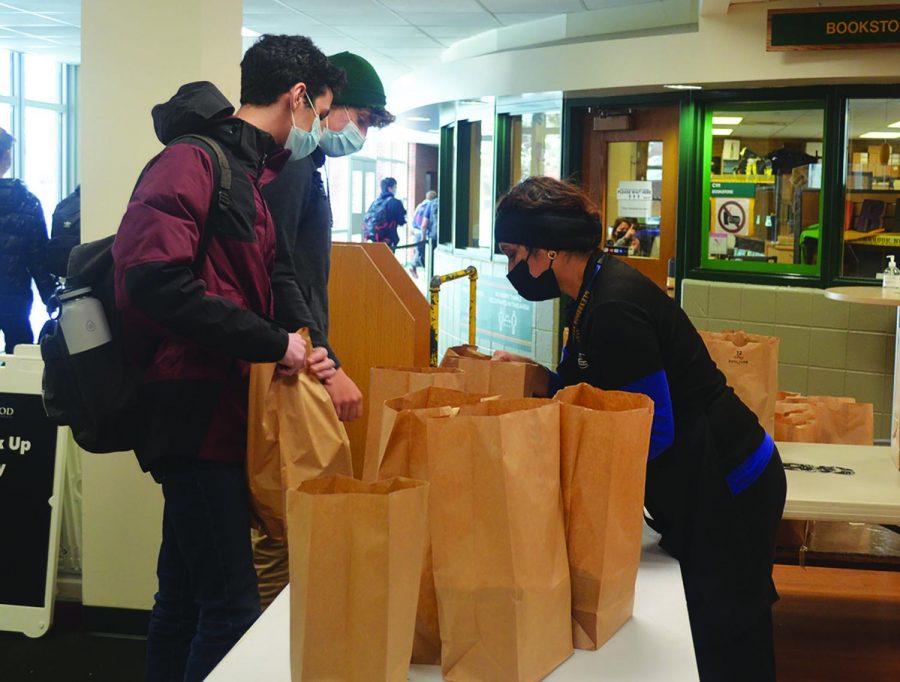District facilitates free meal program
Federally funded program offers daily bagged breakfast, lunch
After a friend recommended junior Andrew Marasco try the free meals being offered at school, he began using the free meal program on a daily basis starting second semester. Marasco was surprised by the amount of food provided.
“My initial reaction was just, like, ‘How is this free?’” Marasco said in a video conference.
Since March 2020, Glenbrook High School District #225 has been participating in a federally funded free meal program, offering a daily breakfast and lunch for all Glenbrook students ages 18 or younger. Approximately 160 Glenbrook North students pick up the meals, which are packaged together, each day as of Feb. 3.
Lauren Bonner, associate principal for administrative services, said in a video conference, “We became a facilitator [for the federally funded program] to make sure that our own students and their families had adequate meal service during the pandemic.”
The U.S. Department of Agriculture decided to offer the annual Summer Food Service Program, which typically only functions in the summer, earlier than usual due to pandemic-related closures of schools. The program began last spring, continued operating throughout the summer and was extended to the entire 2020-21 school year due to the pandemic.
Tim Murphy, a principal consultant at the Illinois State Board of Education Nutrition Department, said in a phone interview that the current program provides needed flexibility with delivery and pick up of meals and allows schools to decide which meals to offer from breakfast, lunch and dinner.
Federal requirements for schools implementing the program include food safety measures, equal opportunity for all students to participate, record keeping of food purchases made for the program, accommodations for students with food allergies and the components of each meal, Murphy said.
The federally required components for lunches include milk, a fruit or a vegetable, grain, bread and a meat or a meat substitute, Murphy said.
According to paraprofessional Juliet Bennett, she encourages students to take the meals, telling them the food is for everyone, regardless of financial status.
According to Marasco, he noticed some students avoiding the meals when the program began.
“But once people found out that [the meals] were good, more people grabbed them,” Marasco said.
Rebecca Cohen, a district manager for Quest Food Management Services, said in a video conference that hot dishes, like hamburgers and grilled chicken sandwiches, have been incorporated into meals since the beginning of February.
Students can pick up the daily meals during lunch breaks at the main entrance, the cafeteria or outside the Student Activities Center. Packaged meals for the weekend are available after school on Fridays at the main entrance. Seven-day meal kits containing food for an entire week can be picked up at Glenbrook South’s Door H on Mondays from 8:30 a.m. to 10:30 a.m. and 2:30 p.m. to 4:30 p.m.
The program produces little waste as most leftover food is refrigerated and used for future meals, Cohen said.
According to Marasco, the program allows for free time during lunch breaks that he would otherwise spend making lunch.
“[The program is] a good resource, just making sure everyone has something to eat,” Marasco said.


